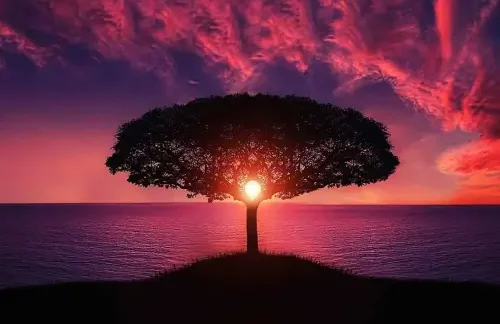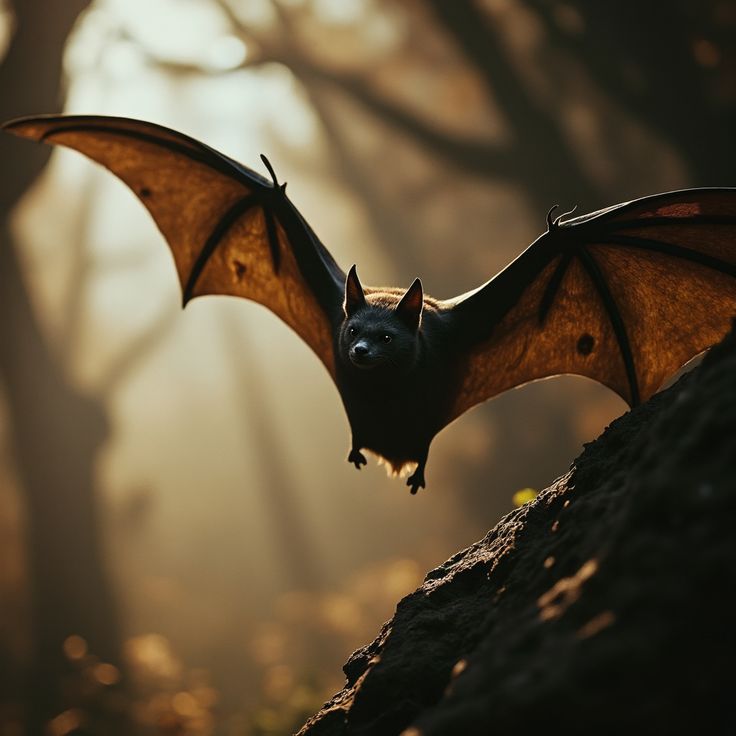Rarest Birds In The World : 10 Species on the Brink
Birds are among the most captivating creatures on Earth. Their vibrant plumage, melodic calls, and graceful flight have fascinated people for centuries. Often seen as symbols of freedom, birds appear in mythology, literature, and art across cultures. But behind their beauty lies a sobering reality: not all birds are thriving. Some are struggling to survive — their populations so low, they are considered the rarest birds in the world.
In some cases, bird species are naturally rare, inhabiting only remote islands or dense forests. But for most endangered birds, rarity is caused by human actions. Deforestation, illegal wildlife trade, pollution, and the introduction of non-native predators have pushed many species to the brink. Climate change only worsens these problems by disrupting natural habitats, breeding cycles, and food sources.
Why does this matter? Birds play critical roles in ecosystems. They help control insect populations, spread seeds, and pollinate plants. When a rare bird vanishes, the entire environment feels the impact. Protecting birds means protecting the delicate balance of nature.
In this article, we’ll explore the lives of ten of the rarest birds in the world. Each of these species is a powerful example of resilience, vulnerability, and the importance of conservation. From the flightless Kakapo of New Zealand to the mysterious Blue-eyed Ground Dove of Brazil, these birds tell incredible stories of survival against the odds.
You’ll learn what makes each bird unique, why its population has declined, and how scientists and conservationists are working to protect them. Most importantly, you’ll discover how we can all help prevent these living treasures from disappearing forever.
Let’s begin our journey into the extraordinary — and endangered — world of rare birds.
1. Kakapo – New Zealand

The Kakapo is a large, flightless parrot native to New Zealand, and arguably one of the rarest birds in the world. With a round body, green mossy feathers, and a nocturnal lifestyle, it resembles something out of a fantasy novel. Unlike most parrots, the Kakapo cannot fly — it waddles through the forest floor and climbs trees with its strong legs and beak.
Population status: Fewer than 250 individuals
Habitat: Native forests of New Zealand
Unique features: Nocturnal, flightless, strong scent, owl-like face
Threats: Introduced predators (like stoats and cats), habitat destruction
Conservation: Active breeding programs and predator-free island relocations have helped stabilize numbers slightly. Each Kakapo is tagged and closely monitored by conservationists.
2. Nicobar Pigeon – Southeast Asia
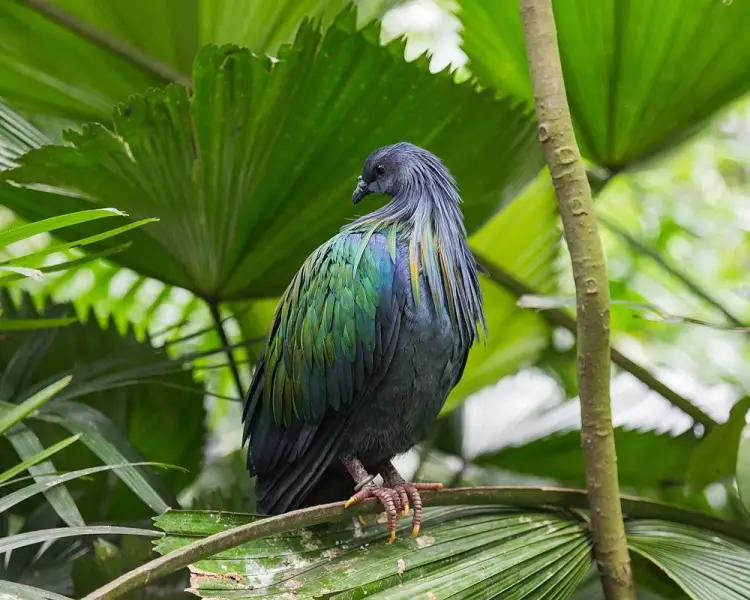
A dazzling relative of the extinct dodo, the Nicobar Pigeon is a truly exotic sight. Its iridescent feathers shimmer with shades of green, blue, and copper. Found in island forests and mangroves across Southeast Asia, this species is increasingly threatened.
Population status: Decreasing
Habitat: Coastal forests and islands of the Nicobar Islands, Indonesia, and the Philippines
Unique features: Metallic sheen, red legs, and white tail
Threats: Habitat loss, hunting for food and ornamental feathers, and illegal pet trade
Conservation: Some island protections are in place, but enforcement is weak.
3. Chinese Crested Tern – China & Taiwan

Once thought extinct, the Chinese Crested Tern is a seabird rediscovered in 2000. Its elegant white body, black crest, and yellow-tipped beak make it distinct, but its rarity makes it iconic in the world of bird conservation.
Population status: Fewer than 100 individuals
Habitat: Coastal islands and estuaries in Eastern China and Taiwan
Unique features: Black crest, pale yellow-orange bill, and striking call
Threats: Nesting habitat disturbance, typhoons, egg collection, and competition with other seabirds
Conservation: Efforts include breeding colony protection, artificial nest installations, and public awareness campaigns.
4. Philippine Eagle

Also called the “Monkey-Eating Eagle,” this majestic bird is the national symbol of the Philippines. It is one of the world’s largest and most powerful eagles, with a wingspan over 2 meters and a distinct feathered crest.
Population status: Estimated 400–500 individuals
Habitat: Old-growth tropical rainforests in the Philippines
Unique features: Long crown feathers, strong talons, piercing eyes
Threats: Massive deforestation, hunting, and habitat fragmentation
Conservation: Protected under Philippine law, with a dedicated Philippine Eagle Foundation working on habitat recovery and captive breeding.
5. Javan Green Magpie – Indonesia
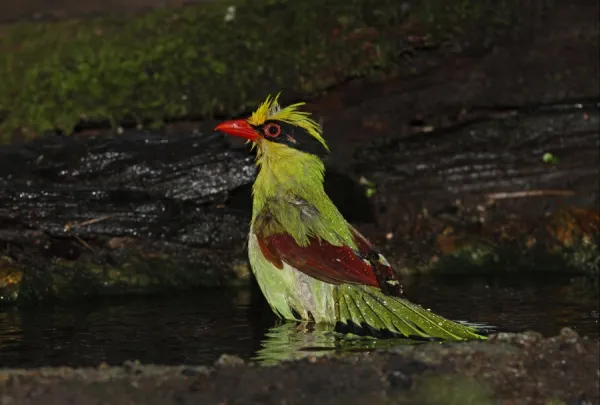
This bright green songbird is critically endangered due to its popularity in the illegal bird trade. Its vivid color and melodic calls make it highly desirable, but also dangerously at risk.
Population status: Less than 50 in the wild, some in captivity
Habitat: Montane rainforests in western Java
Unique features: Luminous green feathers, red beak and legs
Threats: Illegal trapping, habitat destruction
Conservation: Breeding programs exist, but wild recovery remains extremely challenging due to ongoing demand.
6. Blakiston’s Fish Owl – Russia & Japan

The largest owl in the world, Blakiston’s Fish Owl is a solitary, forest-dwelling raptor that relies on undisturbed riverbanks for hunting fish. It is incredibly rare and elusive, often seen only by experienced birdwatchers.
Population status: Estimated 1,000–2,000 mature individuals
Habitat: Riparian forests in Russia’s Far East and northern Japan
Unique features: Enormous wingspan, feathery ear tufts, yellow eyes
Threats: Logging, river degradation, lack of suitable nesting sites
Conservation: Some progress in protecting habitat zones and installing artificial nests
7. Amsterdam Albatross

This majestic seabird breeds exclusively on a single remote island — Amsterdam Island in the southern Indian Ocean. Its massive wingspan and graceful gliding are remarkable, but its vulnerability is alarming.
Population status: Less than 200 mature individuals
Habitat: Amsterdam Island breeding grounds and vast open seas
Unique features: Up to 3-meter wingspan, slow breeding rate
Threats: Longline fishing, ocean pollution, climate change
Conservation: Strict island access rules and marine protection zones help mitigate risks
8. Campbell Island Teal – New Zealand

This small, flightless duck was once thought extinct but was rediscovered on an islet off Campbell Island. It’s extremely shy and nocturnal, making it hard to study — but a symbol of hope for bird recovery.
Population status: A few hundred individuals
Habitat: Remote subantarctic islands
Unique features: Flightless, brown plumage, secretive behavior
Threats: Invasive predators (rats, cats), limited habitat
Conservation: Captive breeding programs and rat eradication campaigns have helped numbers rebound slightly
9. Ivory-billed Woodpecker – USA & Cuba
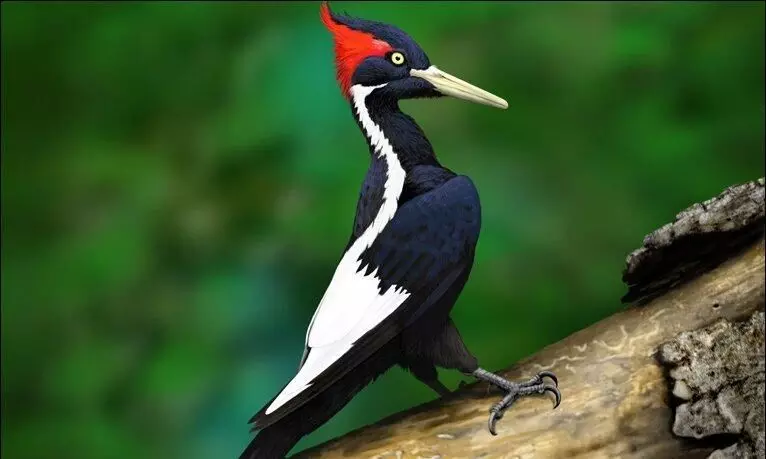
Dubbed “the Lord God Bird” for its awe-inspiring appearance, the Ivory-billed Woodpecker is possibly extinct — but some enthusiasts and scientists believe it may still exist in remote forests.
Population status: Presumed extinct or fewer than 10 if extant
Habitat: Swamps and bottomland forests
Unique features: Large ivory bill, dramatic black-and-white pattern, distinctive double-knock sound
Threats: Logging of old-growth forests, loss of habitat
Conservation: Numerous searches and audio recording attempts have been made, but confirmed sightings are lacking
10. Blue-eyed Ground Dove – Brazil

This mysterious dove vanished for decades before being rediscovered in 2015. Its soft appearance, marked by sky-blue eyes and brownish-pink feathers, makes it one of Brazil’s most iconic endangered species.
Population status: Fewer than 20 known individuals
Habitat: Cerrado grasslands in southeastern Brazil
Unique features: Blue eyes, soft cooing call, subtle plumage
Threats: Agricultural expansion, habitat destruction, fire
Conservation: Local and international efforts aim to restore native grasslands and locate additional populations
The Bigger Picture: Why Rare Birds Matter
The rarest birds in the world are not just scientific curiosities or footnotes in nature documentaries. They are vital components of the ecosystems they inhabit. Birds play countless ecological roles — from pollination and seed dispersal to pest control and environmental monitoring. When a bird species vanishes, it’s not just an isolated loss; it’s a signal of disruption within a larger web of life.
The Kakapo, for example, plays a role in seed dispersal in New Zealand’s forests. The Philippine Eagle helps regulate prey populations in the rainforest. These functions, though often unseen by the casual observer, are critical for maintaining healthy environments. Rare birds are like threads in a woven fabric — remove too many, and the entire system begins to unravel.
Their existence also reflects the health of the planet. When rare birds decline, it’s usually because their habitats are under threat, polluted, or disappearing. In this way, they are indicators — a kind of early warning system alerting us to deeper environmental problems that may soon affect humans as well.
The Human Role in the Decline of the Rarest Birds in the World
There’s no denying that human activities have accelerated the disappearance of many bird species. Habitat destruction through logging, agriculture, and urban development has decimated the natural homes of birds. Climate change, fueled by carbon emissions, alters temperature patterns and disrupts migration and breeding cycles. The illegal wildlife trade continues to target colorful and exotic birds for pets, ornaments, or traditional medicine.
Even well-meaning activities can have unintended consequences. Tourists visiting breeding sites may cause stress to nesting birds. Unleashed domestic cats kill billions of birds annually. And invasive species brought by humans — such as rats and snakes — have wiped out bird populations on islands that once had no predators at all.
It’s important to recognize that the loss of biodiversity isn’t a problem for future generations — it’s happening right now. And unless we act collectively, many rare birds will vanish within our lifetime.
What We Lose When We Lose the World’s Rarest Birds
The extinction of rare birds isn’t just a blow to biodiversity — it’s a loss of wonder, culture, and knowledge.
Birds have inspired songs, poetry, religious symbolism, and national pride. The Philippine Eagle is a source of identity and cultural heritage in the Philippines. Indigenous communities often see birds as spiritual messengers. Losing these species erodes cultural richness and human connection to the natural world.
There’s also scientific loss. Studying rare birds helps researchers understand evolution, behavior, genetics, and ecosystem dynamics. Birds like the Nicobar Pigeon offer clues to the story of the dodo and evolutionary survival. When these birds disappear, we lose opportunities to learn, discover, and innovate.
Finally, rare birds bring joy. Spotting a Blue-eyed Ground Dove in the wild is more than a checklist item — it’s a moment of awe. These emotional connections foster a sense of responsibility and belonging to the planet.
Reasons for Hope
Despite the dire statistics, there is hope. Conservation efforts across the globe have proven that species recovery is possible. The Kakapo was once down to just 50 individuals — now it has rebounded to over 250 thanks to dedicated breeding and habitat protection. The Campbell Island Teal, once presumed extinct, now thrives due to pest eradication and active conservation.
Governments, NGOs, and local communities are increasingly collaborating to save birds. New laws, habitat restoration projects, and educational campaigns are making a difference. Technology is also playing a role — from GPS tracking and drones to AI-driven conservation planning.
One promising approach is the concept of “rewilding” — restoring natural landscapes to their original state, complete with native species. On some islands, entire ecosystems have been brought back to life after invasive predators were removed.
Another source of progress is awareness. As more people learn about rare birds, interest in birdwatching, eco-tourism, and ethical conservation continues to grow. Children who learn to love birds today may become the conservation leaders of tomorrow.
How You Can Help Save the Rarest Birds in the World
Protecting the rarest birds in the world isn’t just a task for governments or scientists. Everyone can contribute in meaningful ways:
- Support bird conservation groups: Donate to or volunteer with organizations like BirdLife International, the Audubon Society, or local wildlife reserves.
- Raise awareness: Share information on social media, write about rare birds, or give presentations at schools and community events.
- Be a responsible traveler: Avoid tours that disturb nesting areas, and choose eco-friendly travel services.
- Make your environment bird-safe: Keep cats indoors, use bird-friendly window decals, and plant native trees and shrubs.
- Advocate for change: Support policies that protect natural habitats and regulate harmful industries.
- Say no to illegal trade: Never buy wild-caught birds or products made from endangered species.
Even small actions, when multiplied across millions of people, can create a powerful impact.
Final Thoughts: A Shared Responsibility
The rarest birds in the world are more than endangered species — they are living testaments to the beauty and fragility of life on Earth. Their continued existence depends on the choices we make today. If we allow these birds to disappear, we lose not only feathers and flight, but stories, songs, and the sense of wonder that connects us to the wild.
But if we act — thoughtfully, boldly, and collectively — we can turn the tide. We can preserve forests, clean our oceans, and give these magnificent creatures a fighting chance.
From the misty forests of New Zealand to the grasslands of Brazil, the future of rare birds is in our hands. Let’s be the generation that doesn’t just mourn extinction — but stops it.
Protecting the rarest birds in the world is not just about saving endangered species — it’s about defending ecosystems and our shared future.
External Source:
Bird Houses: Building Safe Shelters for Birds
